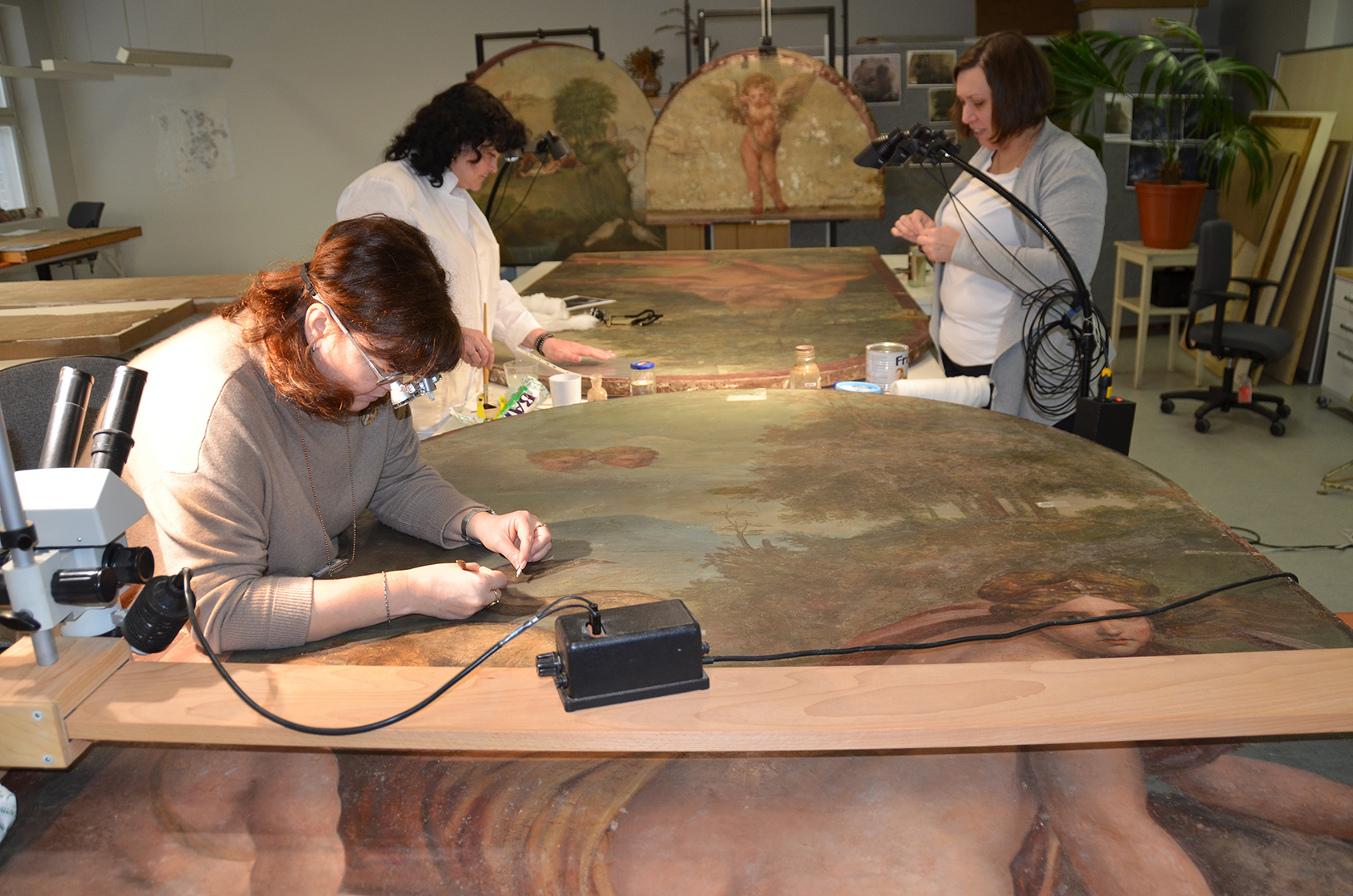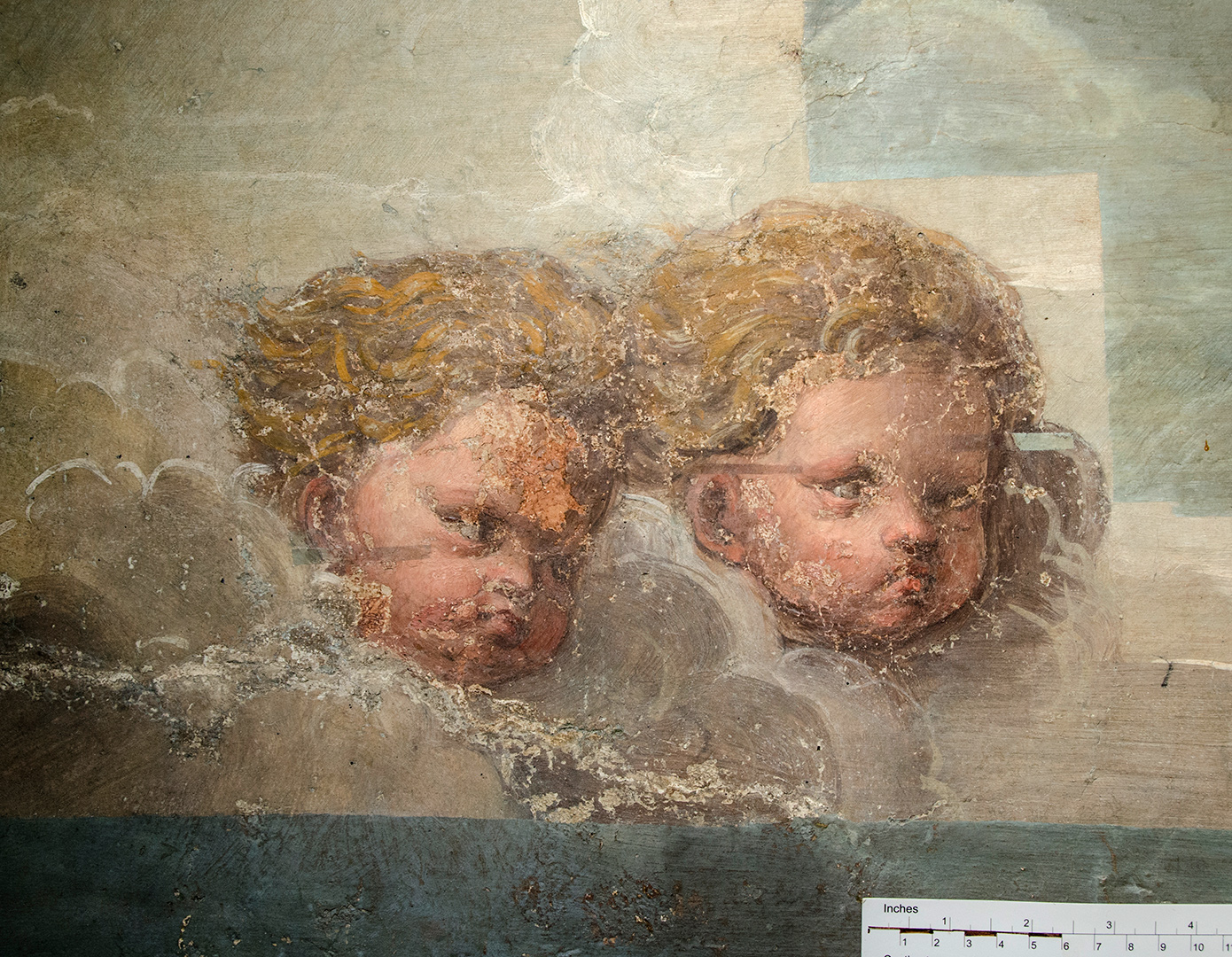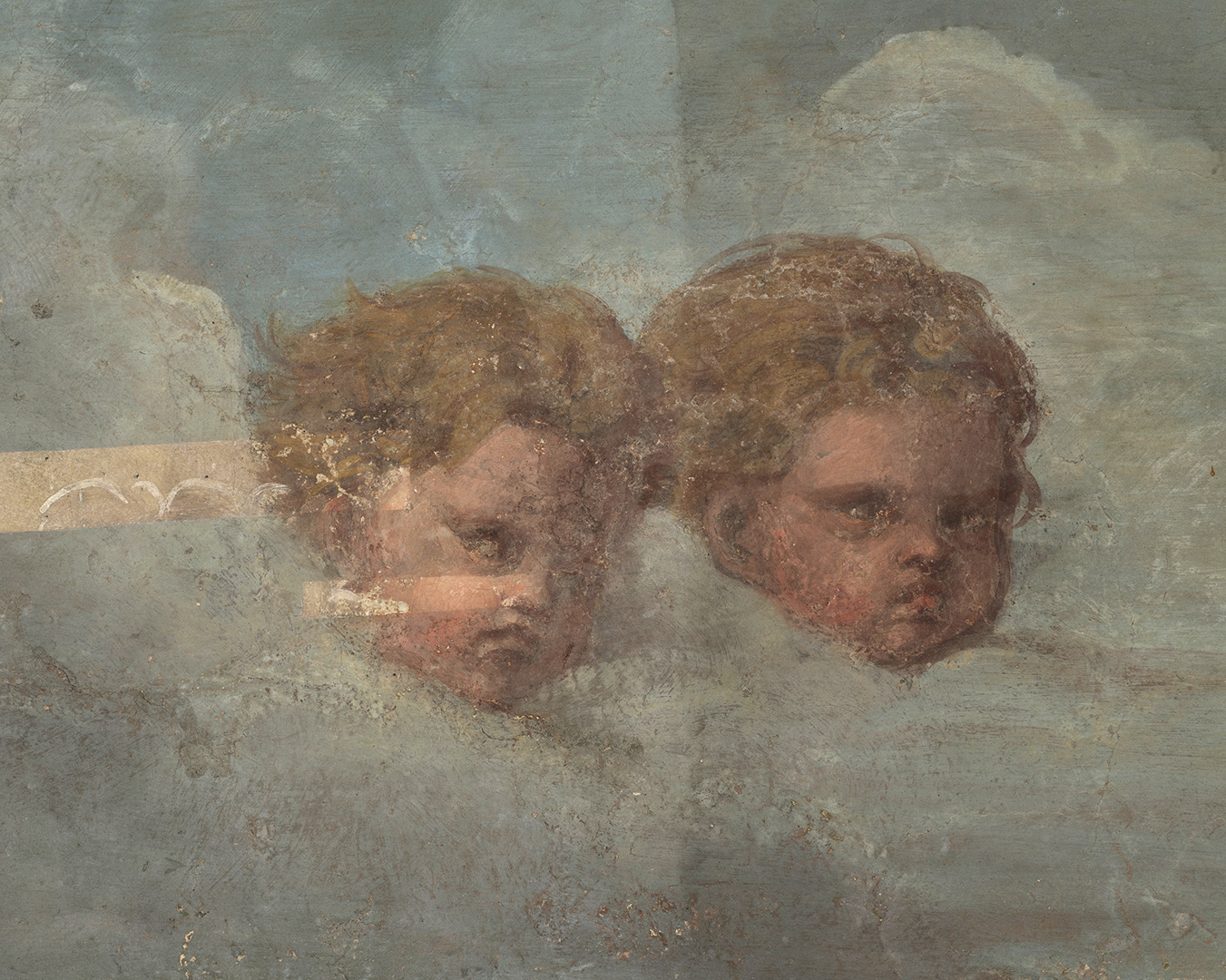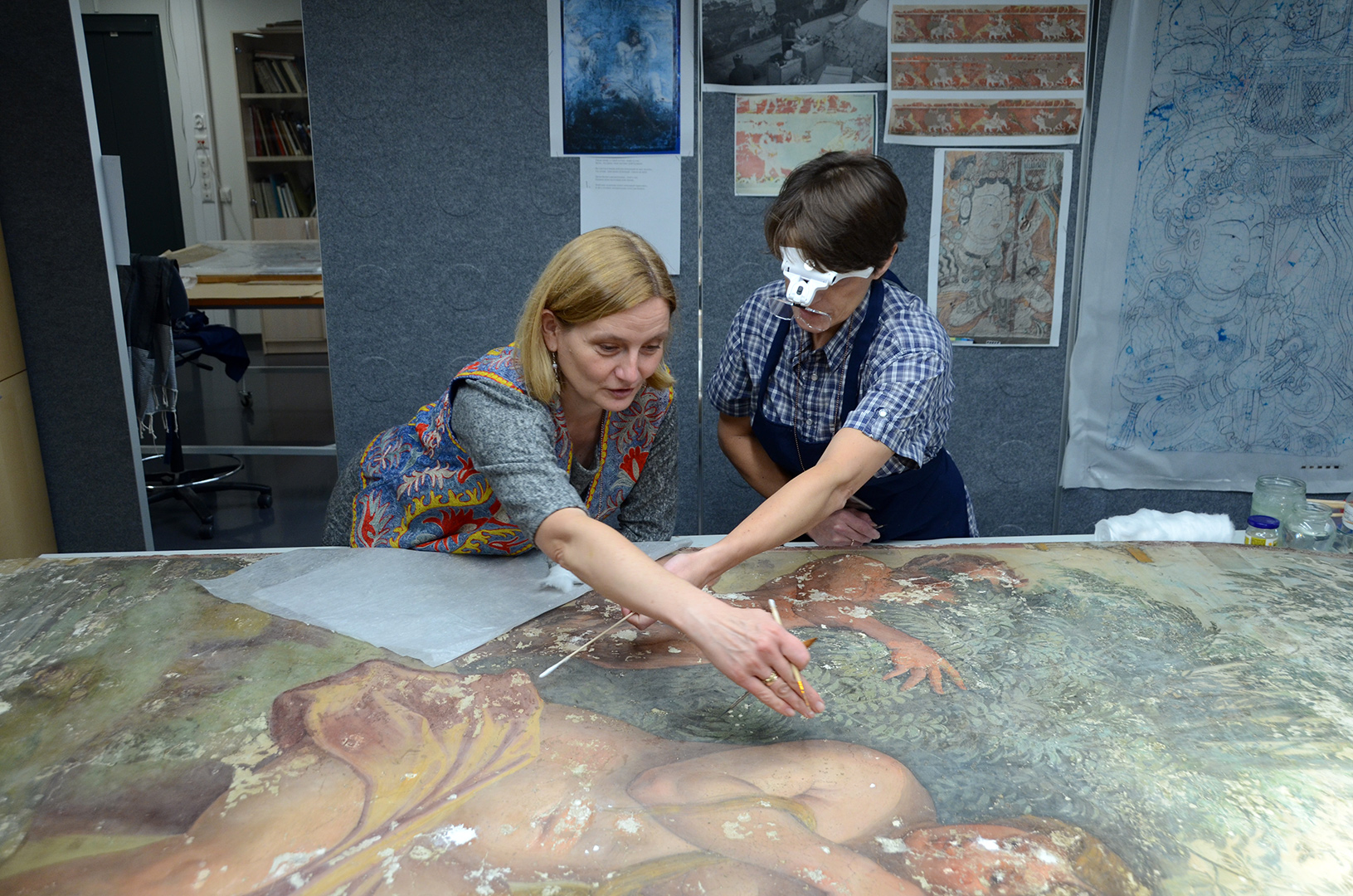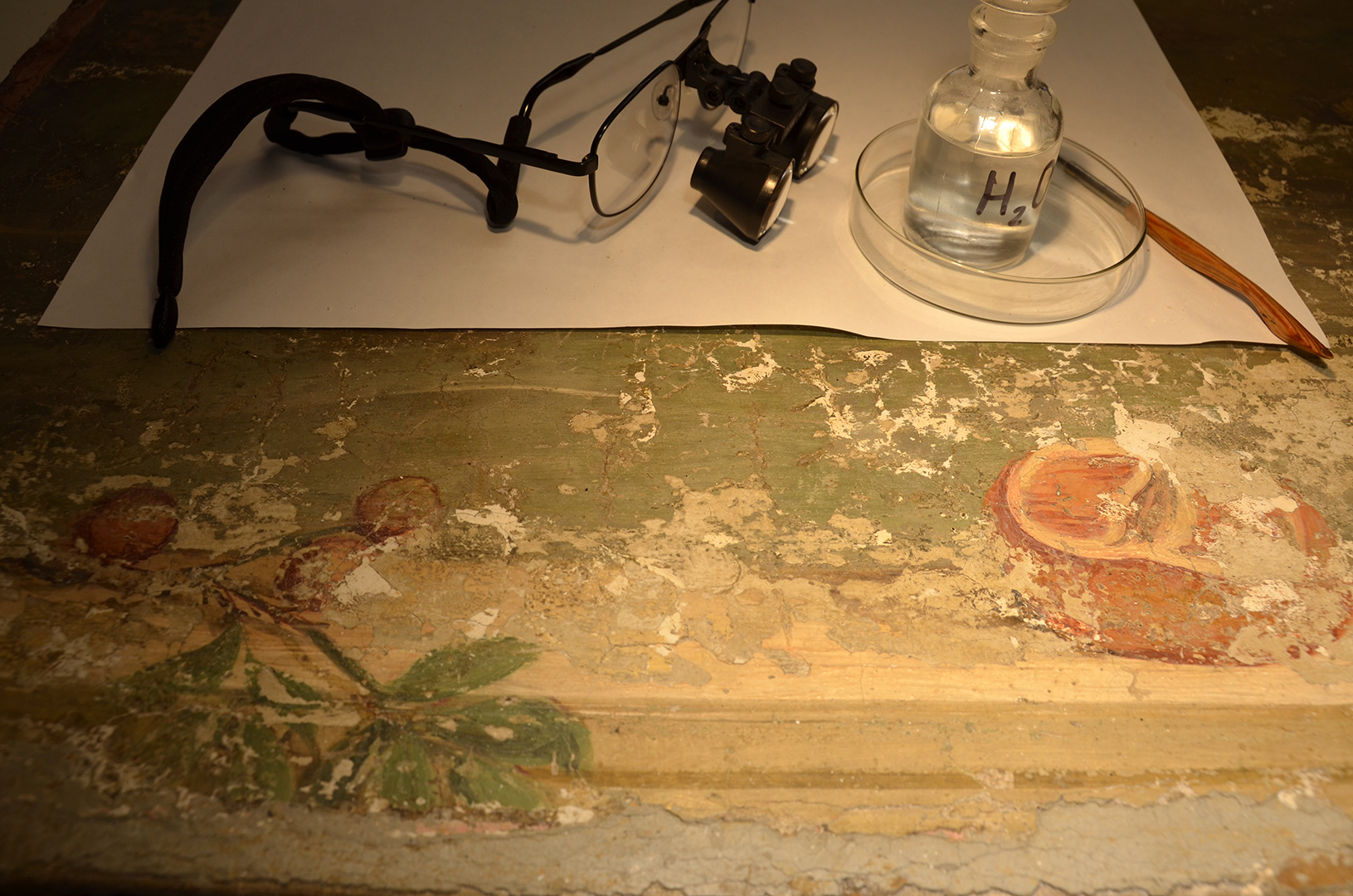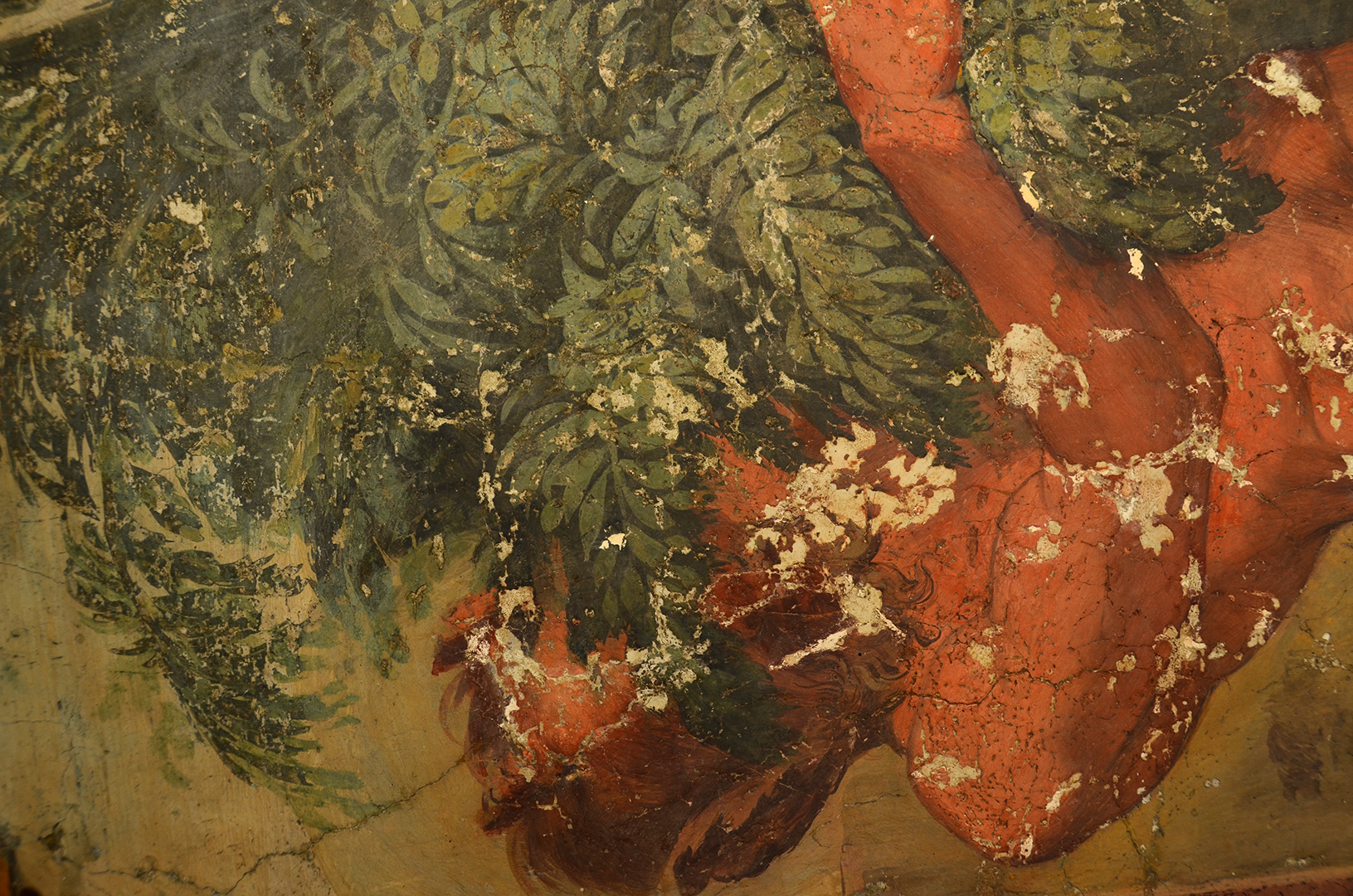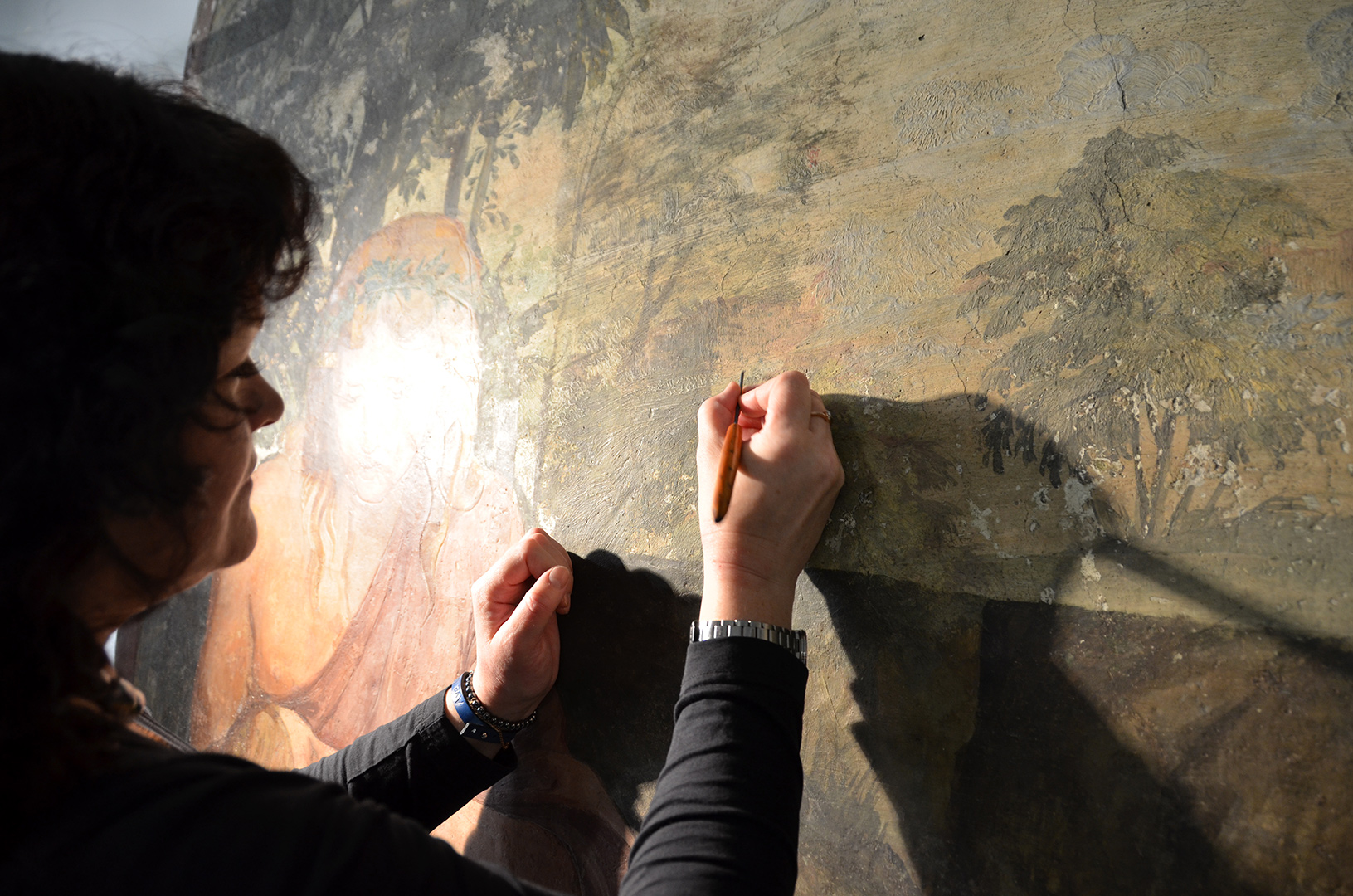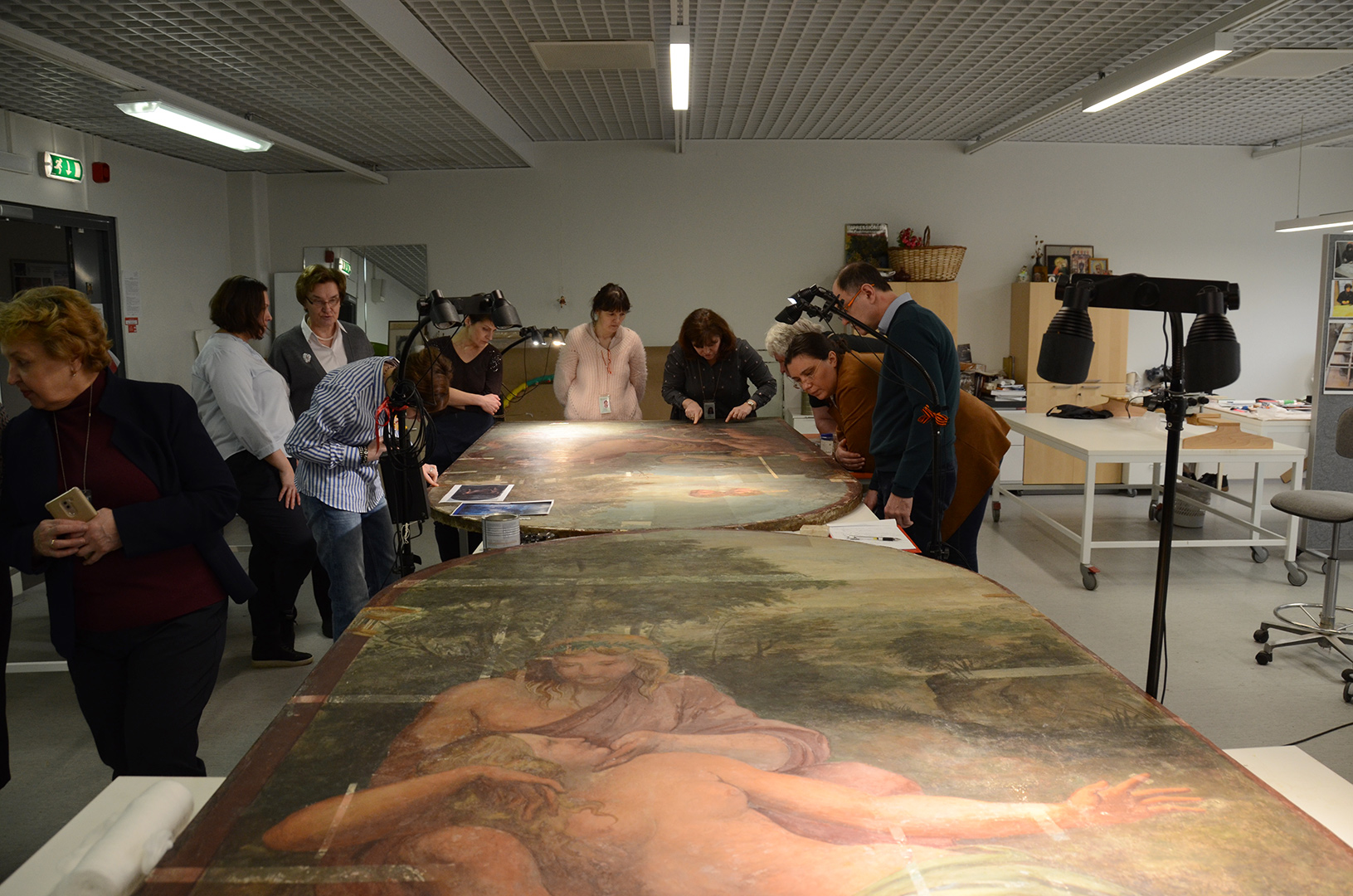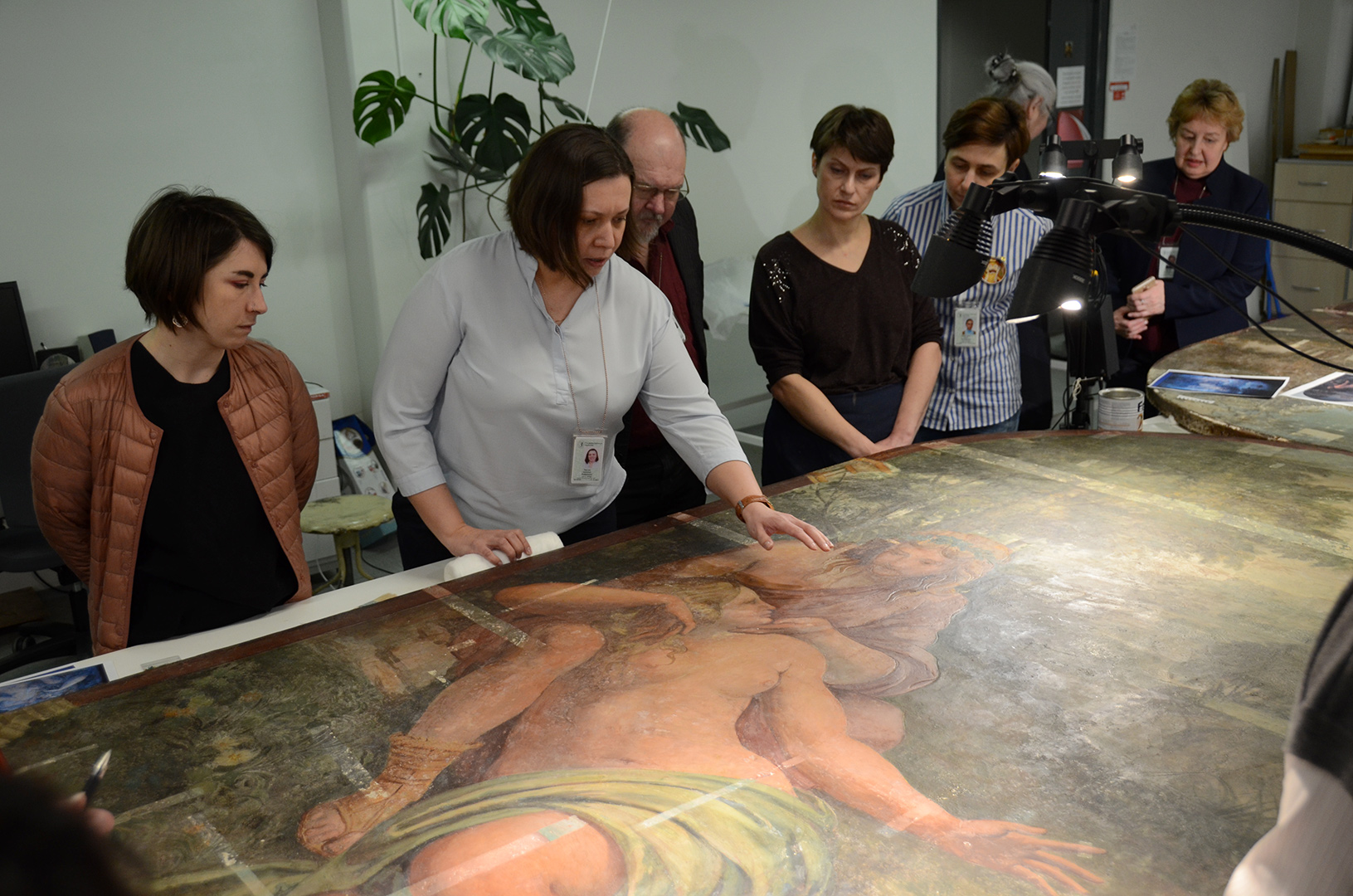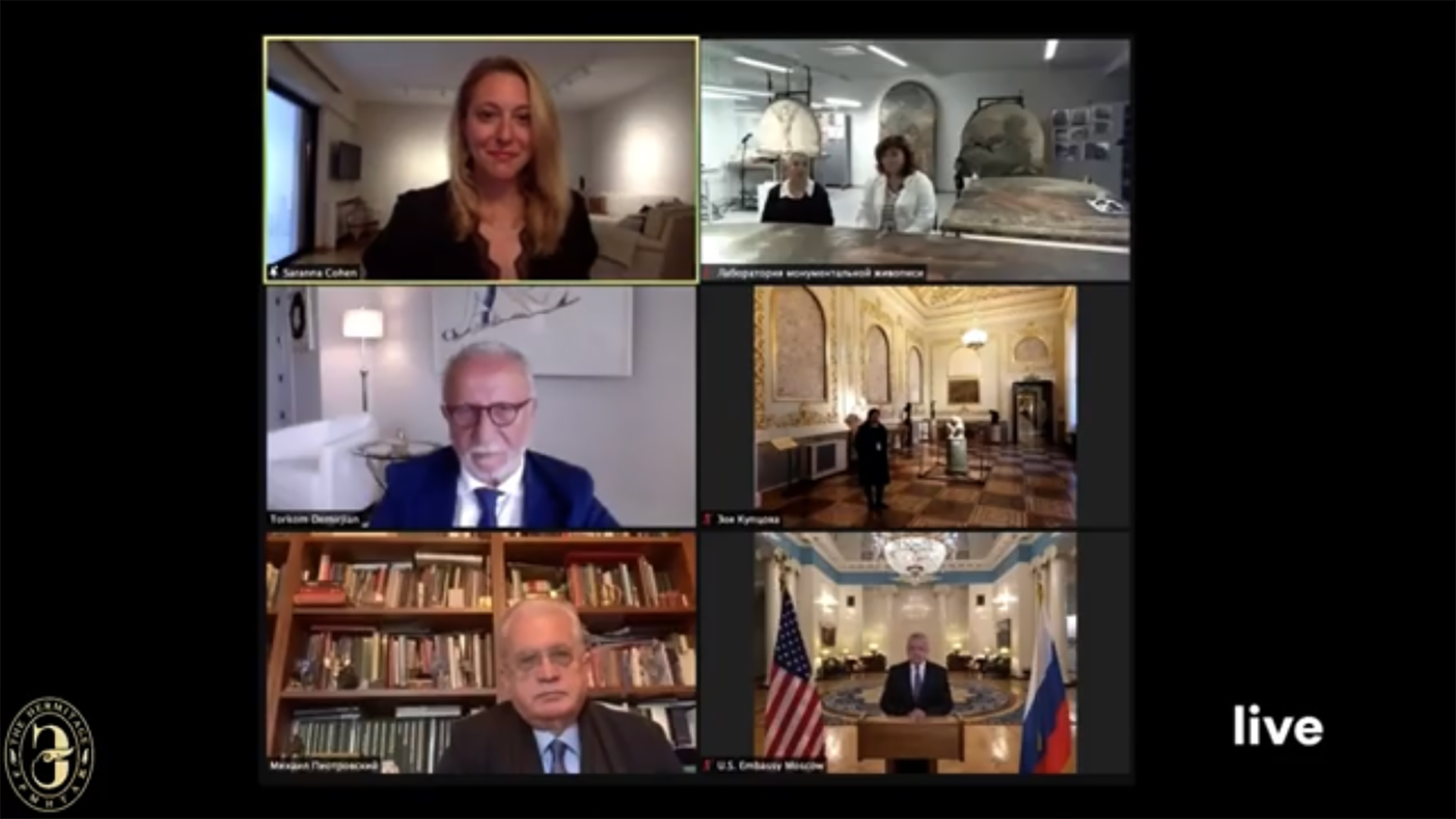Virtual Ceremony Devoted to a Joint Project for the Restoration of School of Raphael Frescoes
On 28 October 2020, a virtual ceremony was held that was devoted to a joint project for the restoration of School of Raphael frescoes in the Hermitage collection.
The Embassy of the United States in Moscow is giving the Hermitage Museum Foundation (USA) a grant for the restoration of three frescoes belonging to the School of Raphael that is being provided by the State Department’s Ambassador’s Fund for Cultural Preservation.
The project brings together four partner organizations: the Ambassador’s Fund for Cultural Preservation, which is a part of the State Department’s Bureau of Educational and Cultural Affairs based in Washington, the Embassy’s Public Affairs Section, the Hermitage Museum Foundation – a New York City-based non-profit organization, and the State Hermitage.
The joint project, which is the result of the active efforts of the Hermitage Museum Foundation (USA), demonstrates the striving of Russia and the USA to use cultural ties as bridges between our two countries, something that is especially important at the present time. The grant being made available to the Hermitage envisages the restoration of the frescoes and also the production of materials about the Hermitage school of restoration and the preparation of a major exhibition entitled “After Raphael”. The grant programme will include the organization of online seminars and virtual presentations by specialists in the preservation and protection of cultural heritage.
The participants in the virtual presentation of the project were US Ambassador John Sullivan, Director of the State Hermitage Mikhail Piotrovsky, Torkom Demirjian, Chairman of the Board of the Hermitage Museum Foundation (USA), Zoya Kuptsova, junior researcher in the State Hermitage’s Department of Western European Fine Art, Adelia Blyakher, head of the State Hermitage’s Laboratory for the Scientific Restoration of Monumental Paintings, and Yelena Stepanova, an artist-restorer in the laboratory. The moderator was Saranna Biel-Cohen, Executive Director of the Hermitage Museum Foundation, who has assumed the role of project coordinator.
The ceremony was opened by Torkom Demirjian: “I want to thank you for this cultural initiative. In America we are in a highly polarized political environment and you are taking a very positive step indicating that the people of the United States and Russia still have goodwill towards one another… The Hermitage is a museum, an educational resource for the whole world and not only for Russia… Dr Piotrovsky and all of his colleagues at the museum have been very true to their mission of being a great source of enlightenment and inspiration. The mandate of the Hermitage Museum is exactly the same as all of our great museums in America.”
“Every cloud has a silver lining,” Mikhail Piotrovsky said. “We never used to meet with our American friends so often, and in the past 25 years we have not had a ceremony together with the American embassy. Culture is a bridge that connects countries. Those bridges might be destroyed by politicians, but we build them up again. An example of that is our joint project that is to become part of the large-scale international exhibition ‘After Raphael’ that will open in the Hermitage. I am grateful to everyone for this initiative and hope that we are on the threshold of something really good.”
The ceremony was continued by US Ambassador John Sullivan: “I look forward to going to Saint Petersburg and seeing the Raphael frescoes myself. This project is the seventh cultural preservation project that the US embassy in Moscow is funding, but this is the first time that the Ambassador’s Fund for Cultural Preservation is working with the State Hermitage Museum. On behalf of the Department of State, I am proud to be the ambassador who is able to give this grant to the State Hermitage. I look forward to seeing a long and fruitful collaboration.”
The curator, Zoya Kuptsova, spoke about the history of the School of Raphael frescoes, while Yelena Stepanova and Adelia Blyakher showed the frescoes themselves, which are now in the Laboratory for the Scientific Restoration of Monumental Paintings, and told about how the work of restoring those masterpieces is progressing. The works – Venus and Adonis, Pan and Syrinx and Venus and Cupid on Dolphins, painted around 1520 – originally adorned the walls of a small villa on the Palatine Hill in Rome. Being in the open air for a prolonged period of almost a century caused considerable damage to the paintings. The frescoes were repeatedly renovated in the 16th and 19th centuries. In 1856, they were bought by the famed collector Giampietro Campana, after which the frescoes were transferred onto canvas and restored once again. As a result, their initial Renaissance-era appearance was almost entirely lost. Over the next two years, the State Hermitage’s specialist restorers will carry out extremely delicate work to reveal the frescoes’ original look and will determine who created them.
The ceremony ended with the showing of a film about the process of restoring the School of Raphael frescoes.
